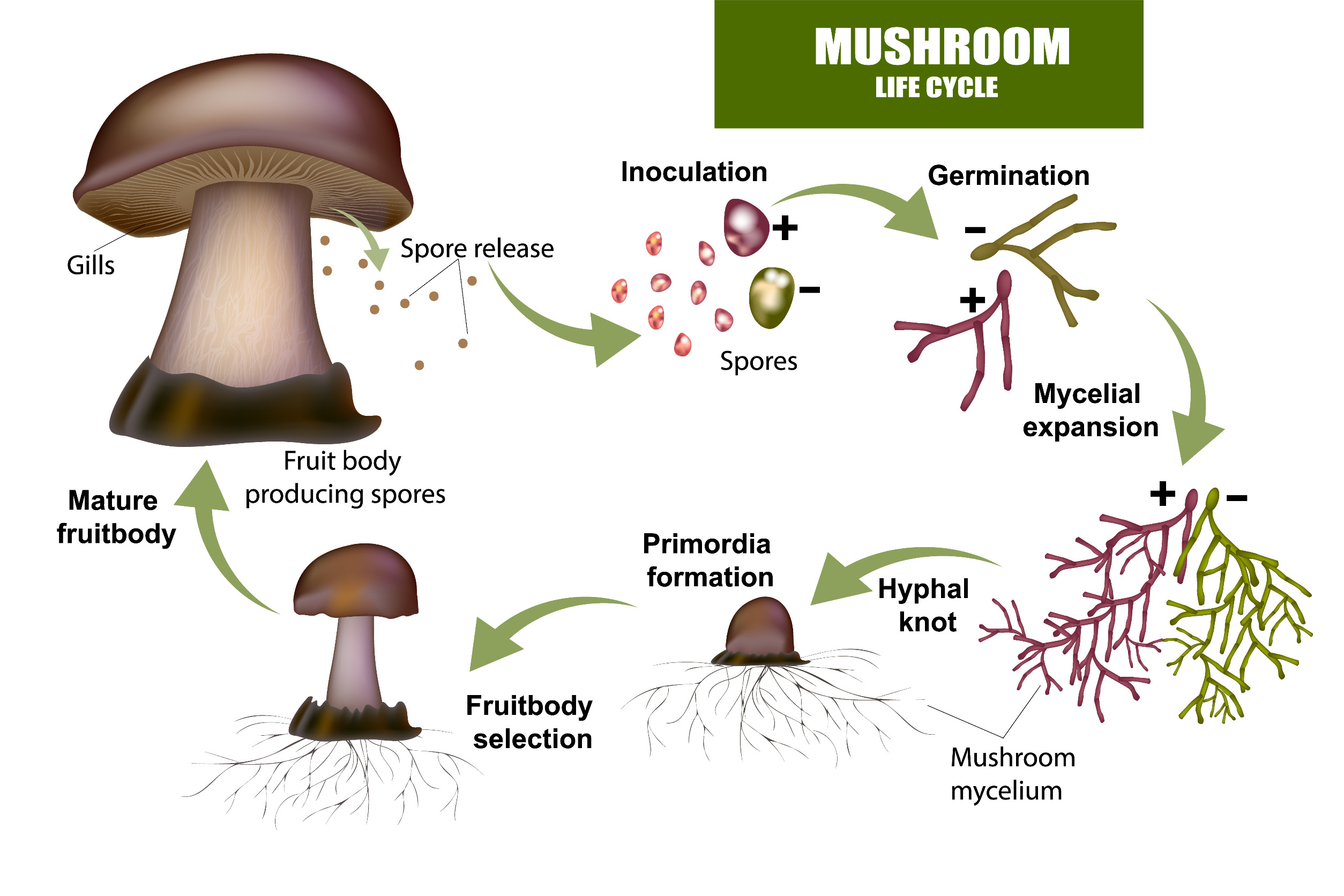Mushrooms are a fascinating species of fungi that play a key role in the ecosystem. They break down dead and decaying organic matter to enrich the soil and make essential nutrients available to other plants. More recently, mushrooms have gained the interest of health enthusiasts and researchers for their medicinal properties. If you are a mushroom spore purchaser and are curious about the process of germination, then this post is for you. In this article, we will take a closer look at the science of fungi and how mushroom spores germinate.
Fungi are a diverse group of organisms that belong to a separate kingdom in the Tree of Life. They come in various shapes, sizes, and colors and can be classified into three categories based on the way they obtain their nutrition: saprophytes, parasites, and mutualists. Mushrooms belong to the first group, saprophytes, which means they feed on dead and decaying organic matter and recycle nutrients in the soil.
Mushroom spore germination is a complex process that starts with the release of spores from the gills under the cap of a mature mushroom. These tiny, dust-like spores are dispersed by wind or water and can travel long distances. When the right conditions are met, such as a moist and nutrient-rich environment, the spores will germinate and start to grow hyphae, which are branching filamentous structures that make up the mycelium.

The mycelium is the vegetative part of the fungus that spreads throughout the soil or substrate and serves as the fungal network for nutrient absorption and transportation. The mycelium of the mushroom eventually grows to maturity and forms fruiting bodies, which we commonly refer to as mushrooms. It’s worth noting that the formation of mushrooms is influenced by environmental conditions such as temperature, humidity, and light exposure.
Mushroom spore germination is heavily influenced by the nutrients and environment present in the substrate or soil. Different types of mushrooms require different conditions for optimal growth, making it important to choose the right substrate and environment for your chosen mushroom species. Some popular substrates for mushroom cultivation include sawdust, straw, and coffee grounds. The substrate you choose will depend on the nutritional needs of your chosen mushroom species.
When germinating mushroom spores, it’s essential to keep the substrate moist, as dry conditions can interfere with the growth of hyphae. Also, the pH level of the substrate should be slightly acidic, typically ranging between 5-6.5, depending on the species of mushroom. The correct temperature is another critical factor in mushroom spore germination, with temperatures ranging between 60-80 degrees Fahrenheit, depending on the mushroom species.
Understanding the science of fungi and mushroom spore germination is essential to anyone interested in cultivating mushrooms. It’s fascinating to see how these tiny spores can grow into vast networks of mycelium and eventually fruit into the form of tasty and nutritious mushrooms. Keep in mind that according to Hidden Forest Mushroom Spores, successful mushroom cultivation requires attention to detail, proper substrate selection, and ideal environmental conditions. We hope that this post has provided you with valuable insights into the process of mushroom spore germination.
